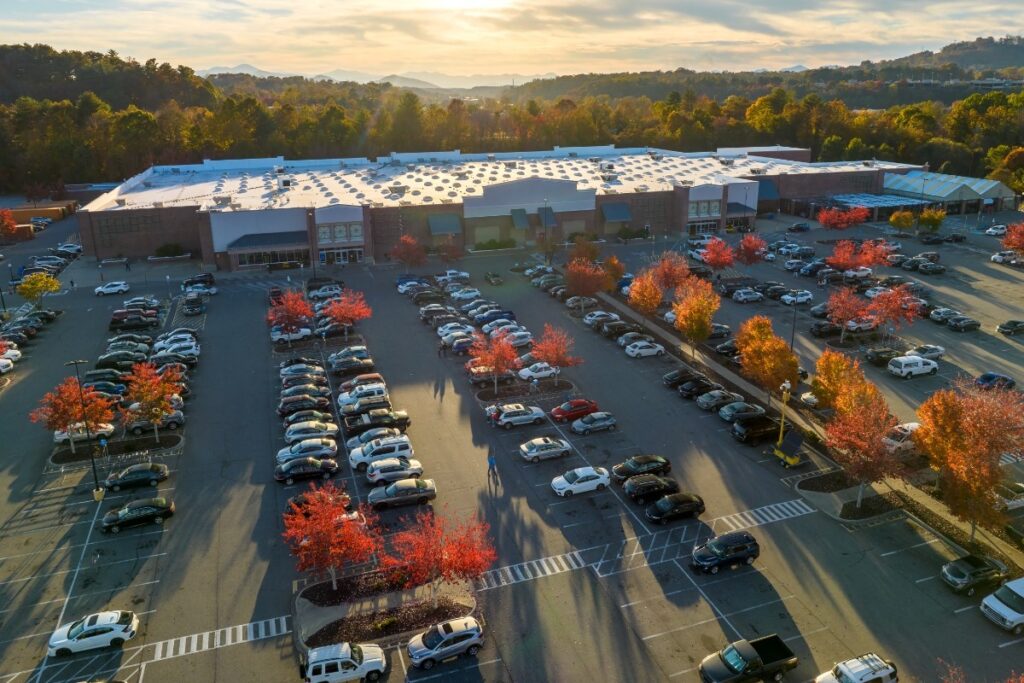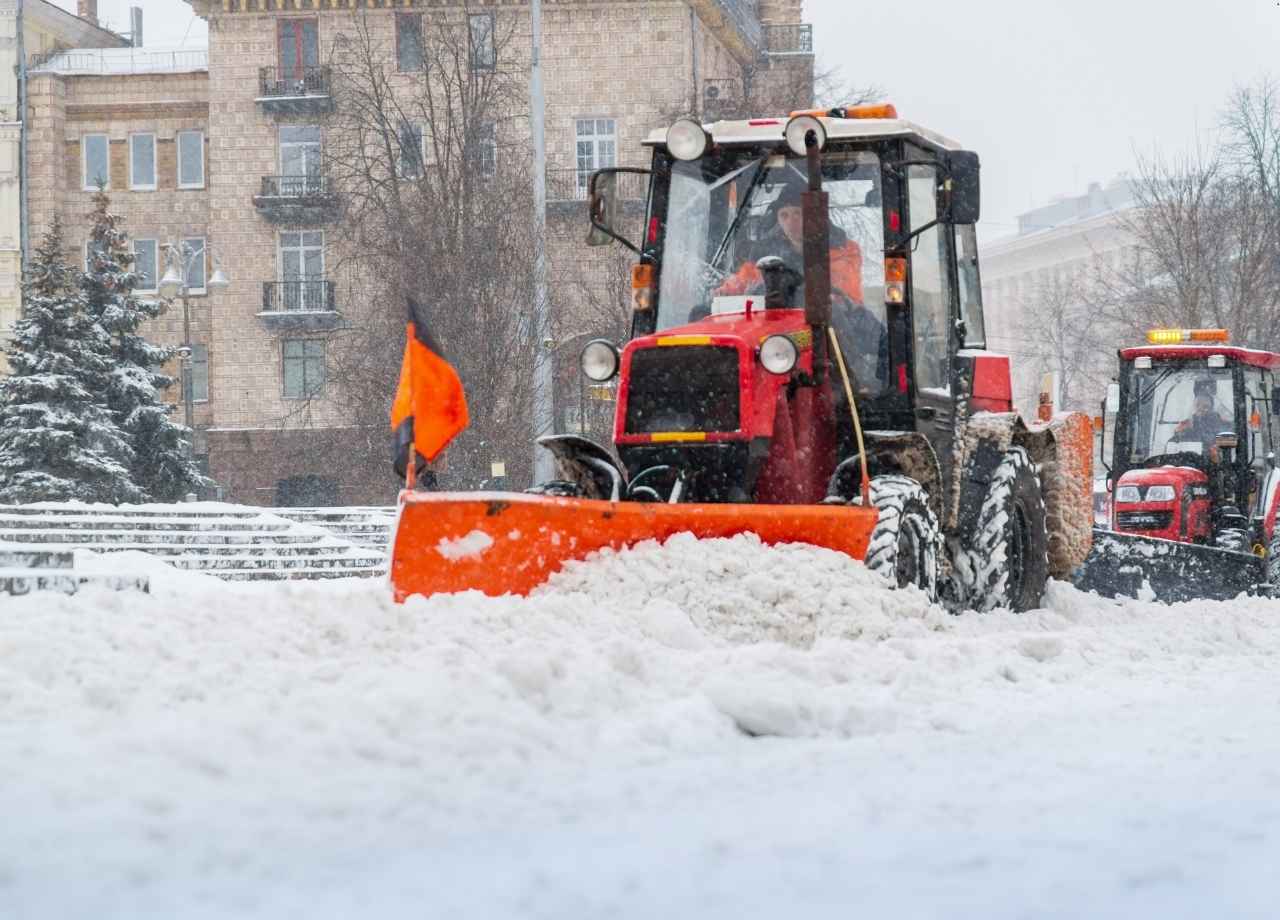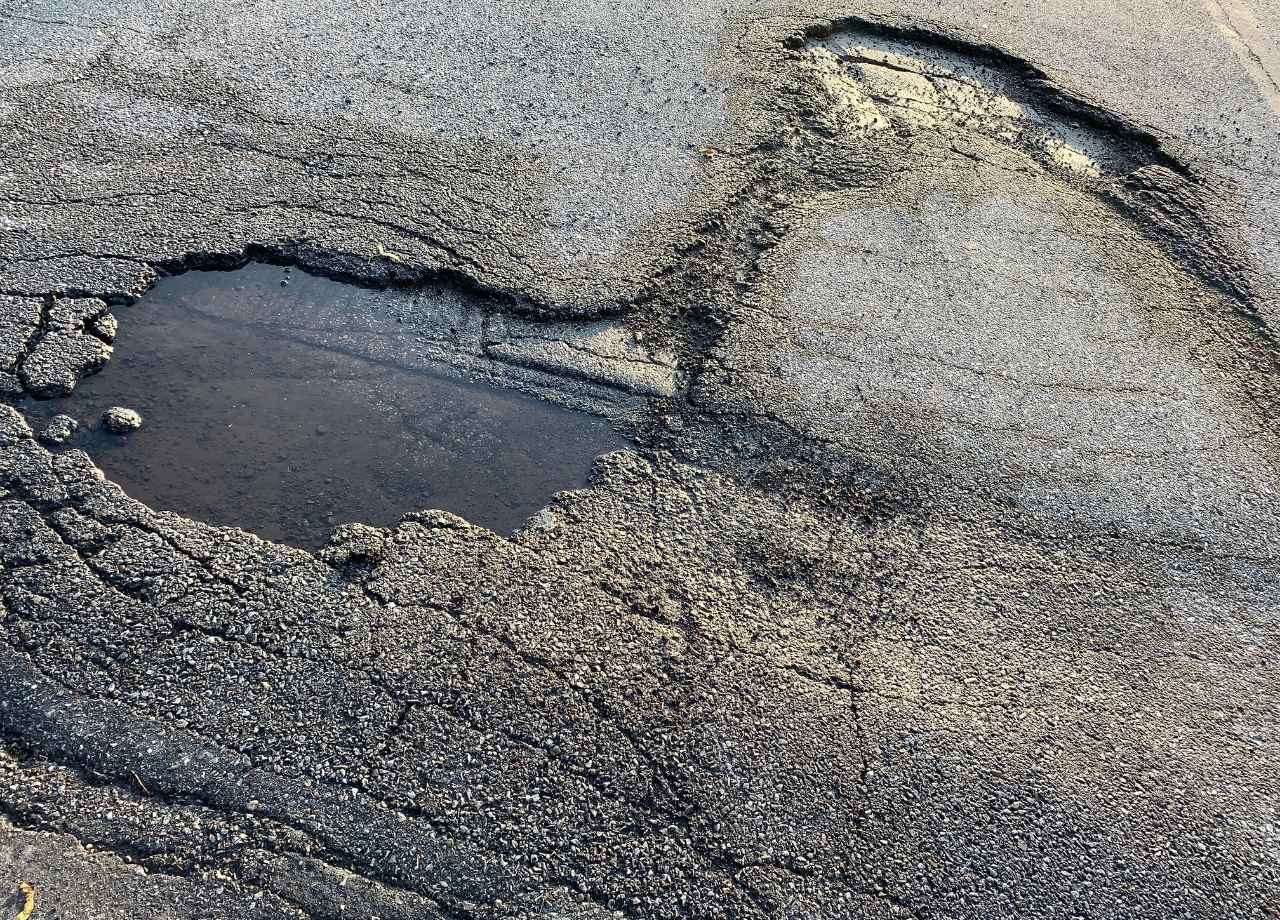Commercial Parking Lot – Prevent Costly Repairs with Proper Care
A customer pulls into your parking lot, hits a deep pothole, and immediately wonders if they should even trust your business. A first-time visitor gets confused by faded parking lines and leaves frustrated. These small issues don’t just affect appearances—they impact customer experience, liability risks, and long-term costs.
A well-maintained parking lot enhances safety, convenience, and first impressions. On the other hand, cracks, potholes, pooling water, and fading markings signal neglect and can lead to expensive repairs if left unaddressed. Proactive maintenance extends pavement lifespan, keeps repair costs manageable, and prevents major disruptions to daily operations.
Why Small Cracks Turn Into Costly Repairs (and How to Stop Them)
Asphalt and concrete surfaces deteriorate over time due to vehicle weight, weather changes, and general wear and tear. A small crack might not seem urgent, but when moisture seeps in, it starts a chain reaction. Cold temperatures cause the trapped water to freeze and expand, widening the crack. Repeated cycles lead to potholes, surface erosion, and foundation damage.
When cracks remain unsealed, water reaches the base layer beneath the pavement, weakening the entire structure. Eventually, sections of the lot may sink, break apart, or require complete resurfacing. The cost difference between routine maintenance and full-scale reconstruction is significant—what could have been a simple crack seal turns into a major investment.
Poor drainage accelerates this problem. If water pools on the surface, it erodes the pavement, weakening the material and leading to further cracking. Without proper drainage solutions, even a newly paved lot can deteriorate faster than expected.
Sealcoating: The Key to Preventing Costly Asphalt Damage
Sealcoating is one of the most effective ways to protect asphalt from long-term damage. It acts as a barrier against UV rays, water, and chemical spills, preventing premature deterioration. Without sealcoating, asphalt becomes brittle, develops cracks, and loses its ability to withstand heavy traffic.
Applying a fresh sealcoat every few years extends pavement life and enhances curb appeal. Businesses that invest in regular sealcoating benefit from:
- Protection against oxidation, preventing the surface from drying out and becoming brittle.
- Resistance to water penetration, reducing the risk of cracks and potholes.
- Improved aesthetics, giving the lot a dark, uniform appearance.
Concrete lots also benefit from sealing treatments, as water infiltration can cause cracks and surface wear. A quality sealant prevents moisture damage and extends durability.
How Regular Cleaning Prevents Long-Term Damage
Dirt, debris, and oil stains weaken parking lot surfaces over time. Oil and gasoline spills break down asphalt binders, softening the pavement and leading to cracks. If left untreated, these substances cause structural damage that requires expensive repairs.
Regular cleaning, including sweeping and power washing, helps prevent these issues. Businesses that prioritize parking lot cleanliness benefit from extended pavement lifespan and lower long-term repair costs.
Heavy Traffic Is Destroying Your Parking Lot – Here’s How to Protect It
Commercial parking lots handle constant stress from vehicles, and some areas experience higher wear than others.

- Loading zones and entrances endure frequent stopping, turning, and pressure from heavy trucks.
- High-traffic lanes wear down faster due to repeated vehicle movement.
- Tire friction creates ruts and depressions, weakening the surface and leading to cracks.
To prevent premature deterioration, businesses should reinforce high-traffic areas with thicker pavement, sealcoating, and strategic maintenance plans. Additionally, proper striping and traffic flow design help distribute wear evenly, reducing damage in concentrated areas.
How Faded Markings Create Safety and Liability Risks
Clear, visible parking lot striping ensures safe traffic flow, organized parking, and compliance with regulations. However, sun exposure, tire friction, and weather conditions cause markings to fade over time.
Faint or missing lines create confusion for drivers, increasing the likelihood of accidents. Businesses with poorly marked lots face risks such as:
- Higher liability in case of accidents caused by unclear parking spaces.
- Non-compliance with ADA regulations for accessible parking.
- Reduced safety in pedestrian areas and loading zones.
Repainting every two to three years helps keep lines visible, ensuring safer and more organized parking areas.
How Seasonal Changes Accelerate Parking Lot Deterioration
Extreme temperatures impact pavement stability. Cold weather causes asphalt to contract, leading to cracks, while hot weather softens asphalt, making it vulnerable to ruts and depressions.
Winter hazards include:
- Freeze-thaw cycles that cause small cracks to expand into potholes.
- Snowplow damage from improperly adjusted blades scraping the surface.
- De-icing chemicals that break down pavement integrity over time.
Summer hazards include:
- Intense UV exposure, causing asphalt to dry out and lose flexibility.
- Softened asphalt in extreme heat, leading to surface depressions and faster wear.
By sealing cracks before winter and applying sealcoat during warmer months, businesses can protect their investment year-round.
Why Drainage Issues Lead to Structural Damage
Standing water is a major threat to parking lot integrity. Puddles indicate poor drainage, which leads to erosion, subgrade instability, and deep cracks.
Effective water management systems—such as catch basins, trench drains, and proper grading—help prevent long-term structural damage. Regular inspections ensure these systems remain unclogged and functional.
Businesses that ignore drainage problems face costly repairs as pavement deterioration accelerates.
How to Know When to Repair, Resurface, or Replace Your Parking Lot
Addressing minor damage early prevents extensive repairs. Sealing small cracks stops moisture intrusion, while patching minor potholes prevents further expansion.
However, when deterioration spreads across large sections, resurfacing may be necessary. Milling and overlaying fresh asphalt restores pavement life without the cost of full replacement.
Complete reconstruction should only be considered when the base layer has failed. This is the most expensive and disruptive option, often requiring businesses to close sections of the lot for extended periods.
Investing in Professional Parking Lot Maintenance
A well-maintained parking lot boosts curb appeal, enhances safety, and protects a business’s long-term investment. National Facility Contractors specializes in proactive maintenance solutions that prevent costly repairs, extend pavement lifespan, and improve traffic flow. Our team provides sealcoating, drainage solutions, crack repairs, and professional striping services to keep commercial lots in top condition.
Preventative maintenance isn’t just about fixing problems—it’s about saving money, reducing risks, and ensuring a professional appearance. Don’t wait until small cracks turn into expensive problems. Contact National Facility Contractors today to schedule a parking lot assessment and maintenance plan.







